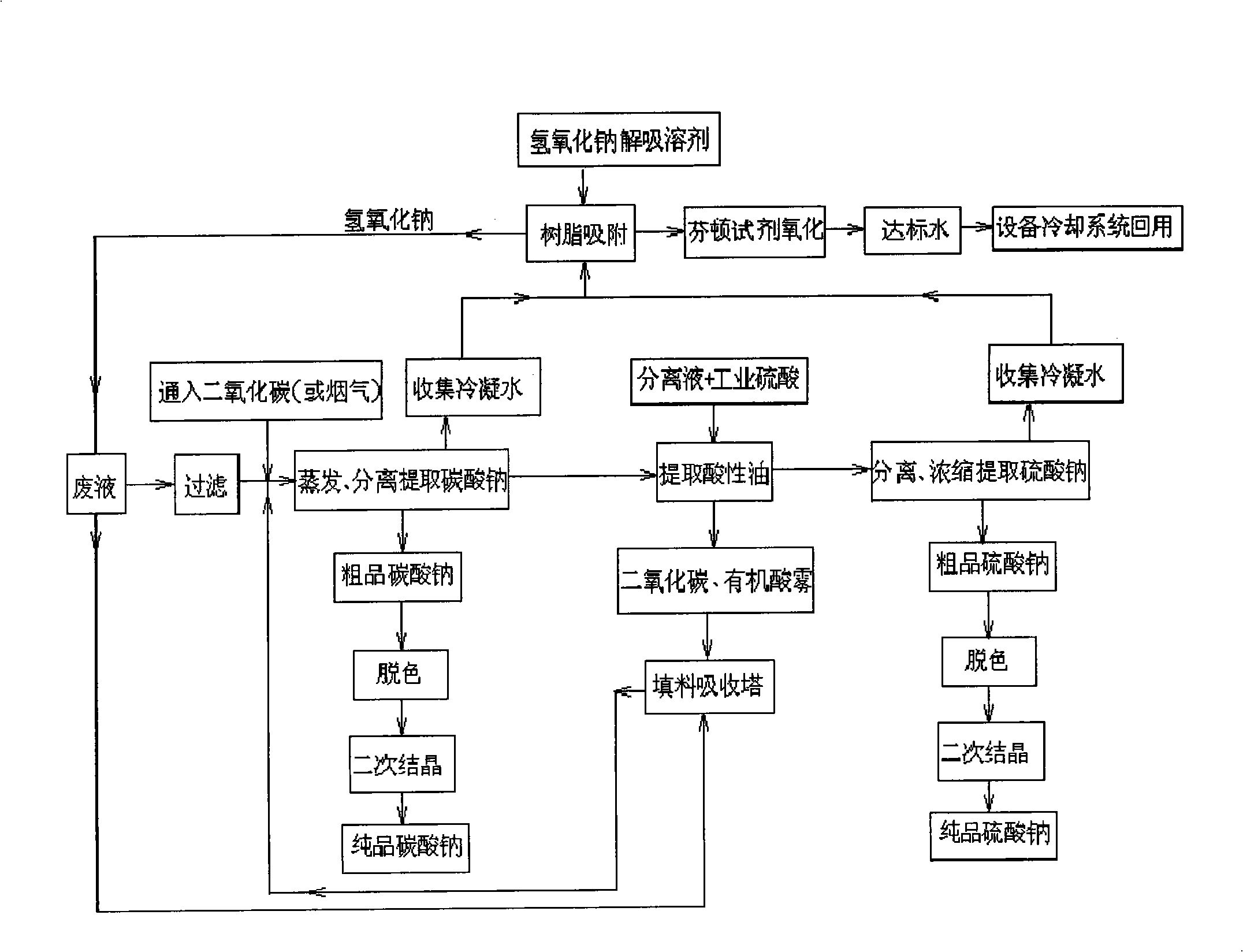Method for zero discharge processing of waste saponification lye of cyclohexanone produced by cyclohexane oxidation technology
An oxidation process, a technology for waste lye, applied in chemical instruments and methods, natural water treatment, water/sewage multi-stage treatment, etc. The effect of low consumption, small investment and low energy consumption
- Summary
- Abstract
- Description
- Claims
- Application Information
AI Technical Summary
Problems solved by technology
Method used
Image
Examples
Embodiment Construction
[0021] The basic material components and weight percentages of the saponification waste caustic lye (hereinafter referred to as waste source) that the inventive method radically handles are:
[0022] Inorganic matter: sodium carbonate (Na 2 CO 3 ) about 7%
[0023] Sodium hydroxide (NaOH) about 8%
[0024] Organic matter: about 35% of organic acids, alcohols and ketones
[0025] The rest: about 50% water
[0026] Below in conjunction with technological process block diagram, briefly describe the implementation process of the inventive method:
[0027] (1) Use a plate and frame filter press to filter the waste liquid at room temperature to remove coarse and miscellaneous substances; at the same time, pass carbon dioxide gas into the filtered waste liquid (where conditions permit, the flue gas mainly composed of carbon dioxide gas can be passed in) , and its input amount needs to meet the balance requirements of the following chemical equation:
[0028] CO 2 +NaOH...
PUM
 Login to View More
Login to View More Abstract
Description
Claims
Application Information
 Login to View More
Login to View More - R&D
- Intellectual Property
- Life Sciences
- Materials
- Tech Scout
- Unparalleled Data Quality
- Higher Quality Content
- 60% Fewer Hallucinations
Browse by: Latest US Patents, China's latest patents, Technical Efficacy Thesaurus, Application Domain, Technology Topic, Popular Technical Reports.
© 2025 PatSnap. All rights reserved.Legal|Privacy policy|Modern Slavery Act Transparency Statement|Sitemap|About US| Contact US: help@patsnap.com

